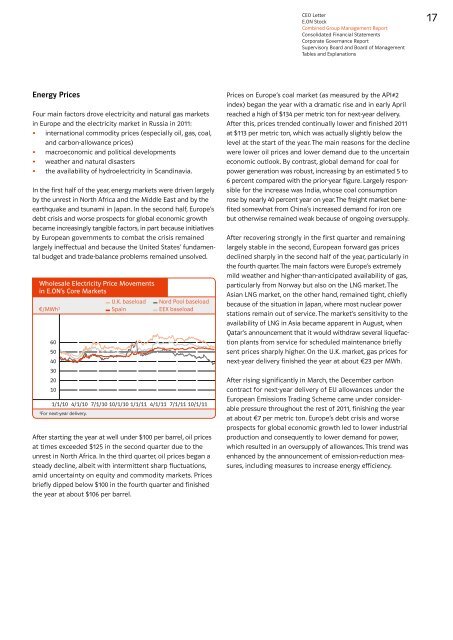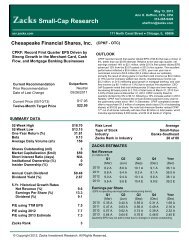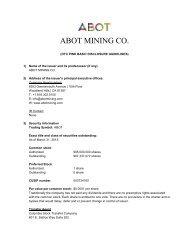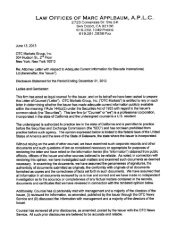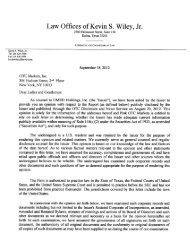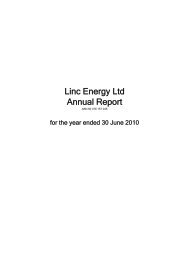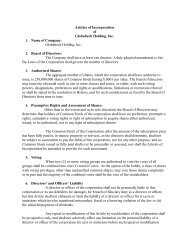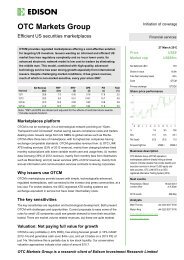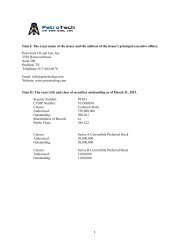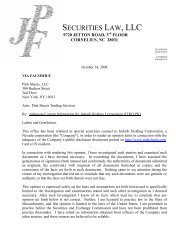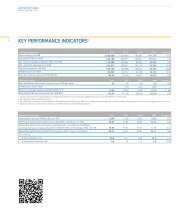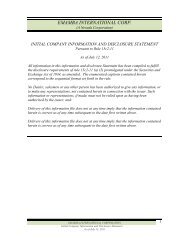2011 Annual Report - OTCIQ.com
2011 Annual Report - OTCIQ.com
2011 Annual Report - OTCIQ.com
Create successful ePaper yourself
Turn your PDF publications into a flip-book with our unique Google optimized e-Paper software.
Energy Prices<br />
Four main factors drove electricity and natural gas markets<br />
in Europe and the electricity market in Russia in <strong>2011</strong>:<br />
• international <strong>com</strong>modity prices (especially oil, gas, coal,<br />
and carbon-allowance prices)<br />
• macroeconomic and political developments<br />
• weather and natural disasters<br />
• the availability of hydroelectricity in Scandinavia.<br />
In the first half of the year, energy markets were driven largely<br />
by the unrest in North Africa and the Middle East and by the<br />
earthquake and tsunami in Japan. In the second half, Europe’s<br />
debt crisis and worse prospects for global economic growth<br />
became increasingly tangible factors, in part because initiatives<br />
by European governments to <strong>com</strong>bat the crisis remained<br />
largely ineffectual and because the United States’ fundamental<br />
budget and trade-balance problems remained unsolved.<br />
Wholesale Electricity Price Movements<br />
in E.ON’s Core Markets<br />
U.K. baseload Nord Pool baseload<br />
€/MWh1 Spain EEX baseload<br />
60<br />
50<br />
40<br />
30<br />
20<br />
10<br />
1/1/10 4/1/10 7/1/10 10/1/10 1/1/11 4/1/11 7/1/11 10/1/11<br />
1For next-year delivery.<br />
After starting the year at well under $100 per barrel, oil prices<br />
at times exceeded $125 in the second quarter due to the<br />
unrest in North Africa. In the third quarter, oil prices began a<br />
steady decline, albeit with intermittent sharp fluctuations,<br />
amid uncertainty on equity and <strong>com</strong>modity markets. Prices<br />
briefly dipped below $100 in the fourth quarter and finished<br />
the year at about $106 per barrel.<br />
CEO Letter<br />
E.ON Stock<br />
Combined Group Management <strong>Report</strong><br />
Consolidated Financial Statements<br />
Corporate Governance <strong>Report</strong><br />
Supervisory Board and Board of Management<br />
Tables and Explanations<br />
Prices on Europe’s coal market (as measured by the API#2<br />
index) began the year with a dramatic rise and in early April<br />
reached a high of $134 per metric ton for next-year delivery.<br />
After this, prices trended continually lower and finished <strong>2011</strong><br />
at $113 per metric ton, which was actually slightly below the<br />
level at the start of the year. The main reasons for the decline<br />
were lower oil prices and lower demand due to the uncertain<br />
economic outlook. By contrast, global demand for coal for<br />
power generation was robust, increasing by an estimated 5 to<br />
6 percent <strong>com</strong>pared with the prior-year figure. Largely responsible<br />
for the increase was India, whose coal consumption<br />
rose by nearly 40 percent year on year. The freight market benefited<br />
somewhat from China’s increased demand for iron ore<br />
but otherwise remained weak because of ongoing oversupply.<br />
After recovering strongly in the first quarter and remaining<br />
largely stable in the second, European forward gas prices<br />
declined sharply in the second half of the year, particularly in<br />
the fourth quarter. The main factors were Europe’s extremely<br />
mild weather and higher-than-anticipated availability of gas,<br />
particularly from Norway but also on the LNG market. The<br />
Asian LNG market, on the other hand, remained tight, chiefly<br />
because of the situation in Japan, where most nuclear power<br />
stations remain out of service. The market’s sensitivity to the<br />
availability of LNG in Asia became apparent in August, when<br />
Qatar’s announcement that it would withdraw several liquefaction<br />
plants from service for scheduled maintenance briefly<br />
sent prices sharply higher. On the U.K. market, gas prices for<br />
next-year delivery finished the year at about €23 per MWh.<br />
After rising significantly in March, the December carbon<br />
contract for next-year delivery of EU allowances under the<br />
European Emissions Trading Scheme came under considerable<br />
pressure throughout the rest of <strong>2011</strong>, finishing the year<br />
at about €7 per metric ton. Europe’s debt crisis and worse<br />
prospects for global economic growth led to lower industrial<br />
production and consequently to lower demand for power,<br />
which resulted in an oversupply of allowances. This trend was<br />
enhanced by the announcement of emission-reduction measures,<br />
including measures to increase energy efficiency.<br />
17


